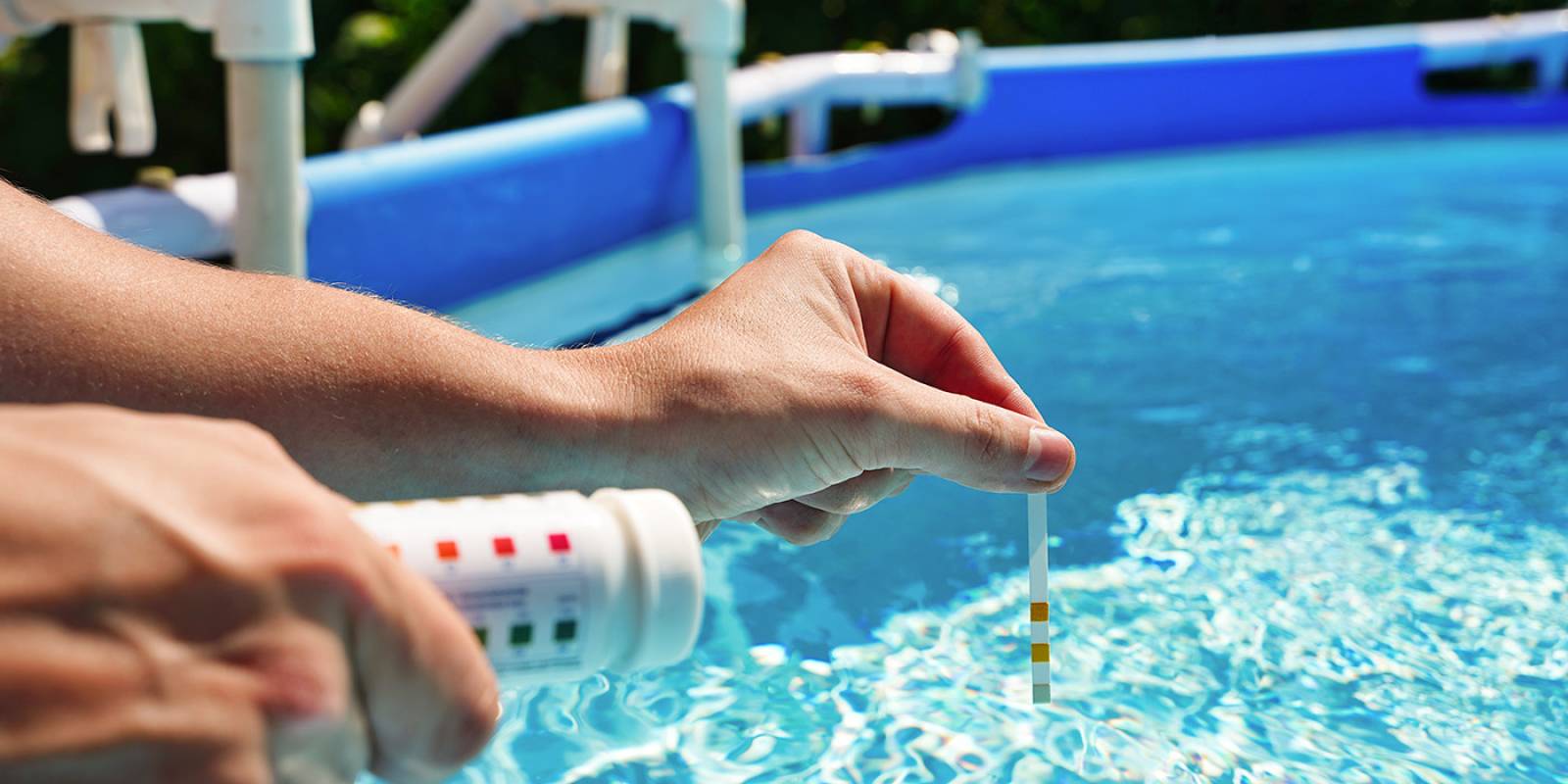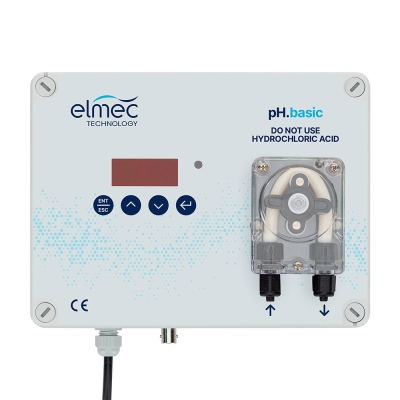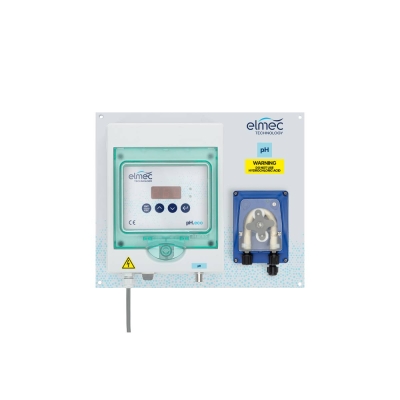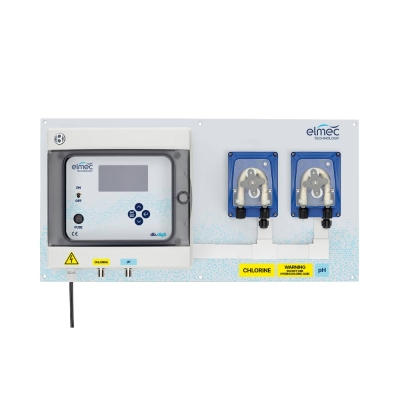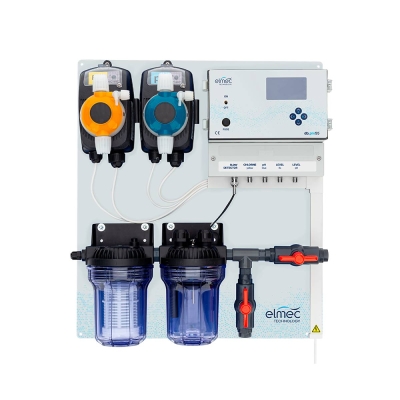Pool Water Testing: What You Need to Know
Among all the maintenance tasks involved in owning a swimming pool, monitoring water quality is undoubtedly one of the most critical.
This article will walk you through why regular water testing is not just a good habit, but an essential part of proper pool management. Before we dive into how water analysis is performed, it’s important to understand why it is necessary in the first place.
The Chemistry Behind Water Testing
Water Balance
To the naked eye, pool water may always look the same. However, it is actually a dynamic chemical system that constantly strives to reach an ideal balance of dissolved minerals—particularly calcium carbonate (CaCO₃). This state of balance is known as saturation.
If the concentration of dissolved minerals is too low, the water is considered undersaturated, making it corrosive. In its attempt to achieve equilibrium, the water will extract minerals from any surfaces it comes into contact with. This process begins with eroding the grout between tiles and can eventually damage metal components such as ladders, pumps, and heat exchangers. Even PVC linings or pool liners are not immune to this type of degradation.
Conversely, oversaturated water behaves in the opposite way: it contains an excess of minerals and will release them in the form of calcium scale deposits. These mineral buildups accumulate on pool surfaces, within plumbing systems, and inside filters. The result is cloudy water and reduced system performance across the entire circulation and filtration network.

The Langelier Saturation Index (LSI): Your Guide to Chemical Water Balance
To determine whether your pool water is likely to become corrosive or scale-forming, the most widely used metric is the Langelier Saturation Index (LSI)—also known as the Taylor Equilibrium.
This is not a measurement of the current condition of the water, but rather a predictive calculation that estimates whether the water will tend to dissolve or deposit calcium carbonate.
Key Parameters in Pool Water Analysis
The LSI is calculated using five essential parameters:
- pH – Indicates whether the water is acidic or basic. It is directly linked to the solubility of calcium carbonate.
- Total Alkalinity (TA) – Measures the water’s buffering capacity to resist changes in pH. A stable alkalinity level is crucial for maintaining balance and plays a significant role in LSI calculation.
- Calcium Hardness (CH) – Refers to the amount of dissolved calcium in the water. Knowing this value helps prevent both structural damage and scale formation.
- Temperature – Warmer water holds less dissolved calcium carbonate, increasing the risk of scaling.
- Total Dissolved Solids (TDS) – Represent the total concentration of salts and organic matter in the water.
The LSI Formula
LSI=pH+TF+HF+AF–12.5\text{LSI} = \text{pH} + \text{TF} + \text{HF} + \text{AF} – 12.5LSI=pH+TF+HF+AF–12.5
Where:
- TF = Temperature Factor
- HF = Hardness Factor
- AF = Alkalinity Factor
These values are derived from standardized reference tables.
Interpreting the Langelier Index
- LSI < 0 → Corrosive water (undersaturated): The water will aggressively seek to balance itself by dissolving minerals from pool surfaces and equipment.
- LSI = 0 → Balanced water: No tendency to corrode or form scale.
- LSI > 0 → Scale-forming water (oversaturated): Excess calcium is likely to precipitate, forming deposits on surfaces and within the circulation system.
What Is the Ideal LSI Value?
While the theoretical target is an LSI of 0, achieving this in real-world conditions is often challenging. A practical and acceptable range is between -0.3 and +0.3, within which the water remains relatively stable and safe for pool infrastructure.
Achieving Balance: A Multi-Variable Challenge
Maintaining a proper LSI balance requires a coordinated approach. Adjusting a single parameter without considering its impact on others can lead to undesirable consequences.
For example, increasing calcium hardness to correct a low LSI may push the index too high if the pH and alkalinity levels are already elevated.
This highlights the delicate, interconnected nature of pool water chemistry and demonstrates how valuable the LSI is for comprehensive water quality assessment and management.
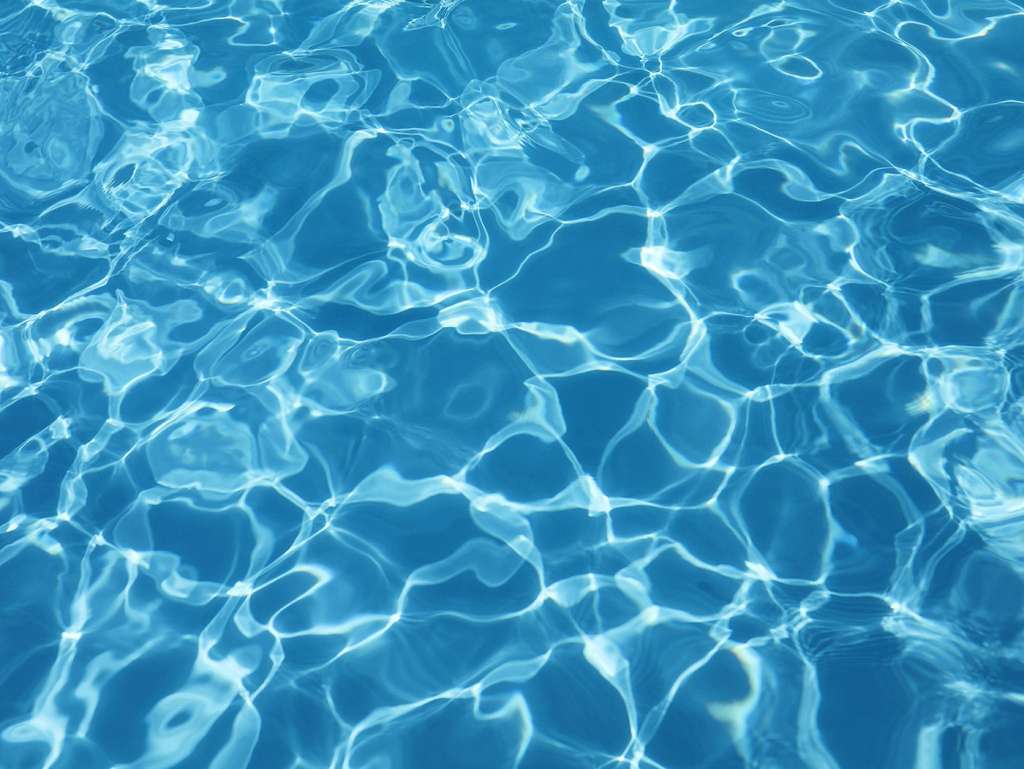
Essential Parameters for Pool Water Analysis
pH (Potential of Hydrogen)
Among all the parameters to monitor, pH—short for potential of hydrogen—has the greatest impact on overall water balance. It measures how acidic or basic the water is on a scale from 0 to 14, with 7 being neutral.
It’s important to note that the pH scale is logarithmic, meaning each unit of change corresponds to a tenfold increase or decrease in acidity or alkalinity.
Why Is pH Important in Pool Water?
The pH level affects nearly every aspect of pool maintenance:
- Chlorine effectiveness – pH directly influences chlorine’s sanitizing power. At lower pH levels, chlorine is highly active but can make the water too corrosive. At higher pH levels, chlorine becomes less effective.
- Bather comfort – An imbalanced pH can irritate eyes, skin, and mucous membranes. (Note: The text incorrectly states that an ideal pH is "close to 4"—this is likely a mistake. The correct value is between 7.2 and 7.6, as confirmed below.)
- Equipment protection – When pH drops below 7, the water becomes acidic and corrosive. When it rises above 7.8, the risk of calcium scale formation on surfaces and equipment increases.
- Water clarity – High pH levels can cause the water to appear cloudy or dull.
What Is the Ideal pH Level in a Pool?
For private pools, the recommended pH range is between 7.2 and 7.6. This range offers the best compromise between effective disinfection, equipment protection, and swimmer comfort.
Chlorine
Chlorine remains the most widely used pool disinfectant due to its proven ability to eliminate bacteria, viruses, algae, and other potentially harmful microorganisms. It also breaks down organic contaminants introduced by bathers, such as sweat, body oils, and cosmetics.
The Three Forms of Chlorine in Pool Water: FC, CC, TC
It’s essential to understand that not all chlorine in the water performs the same function. The three main forms are:
- Free Chlorine (FC) – This is the active form responsible for disinfection. It’s the most critical chlorine measurement to ensure the water is safe.
- Combined Chlorine (CC) – Formed when free chlorine reacts with nitrogen-containing substances like urine or sweat. Also known as chloramines, this form has limited disinfecting power and causes the familiar "chlorine smell." It is calculated by subtracting free chlorine from total chlorine:
CC = TC - FC - Total Chlorine (TC) – This is the sum of free and combined chlorine:
TC = FC + CC
Measuring total chlorine alone is not enough; knowing the free chlorine level is essential for proper sanitation control.
How Much Chlorine Does a Pool Need?
- Free Chlorine:
For private pools, the ideal level is between 1.0 and 1.5 ppm. Under specific conditions—such as saltwater chlorination, intense sunlight, or high bather load—the level may be increased to 2.0–4.0 ppm, provided it remains consistent and properly monitored. - Combined Chlorine:
Should be kept as low as possible, ideally below 0.4 ppm, and never exceeding 0.6 ppm.
Total Alkalinity (TA – Total Alkalinity Capacity)
Total Alkalinity, often referred to as TA or Total Alkalinity Capacity, measures the overall concentration of alkaline substances dissolved in pool water, including carbonates, bicarbonates, and hydroxides. Without adequate alkalinity, pH levels would become unstable and difficult to control. TA is expressed in ppm (mg/L) of calcium carbonate (CaCO₃) equivalent.
Why Is Total Alkalinity Important?
When alkalinity falls outside the recommended range, several issues can arise:
- Low TA (< 80 ppm):
The pH becomes unstable and prone to rapid fluctuations, making it difficult to manage. - High TA (> 150–175 ppm):
Excess alkalinity makes it difficult to lower the pH, even with significant additions of acid.
Optimal TA Range
For most private pools, the ideal range is between 100 and 150 ppm. This ensures pH stability and overall water balance.
Calcium Hardness (CH)
Calcium Hardness (CH) measures the concentration of dissolved calcium ions (Ca²⁺) in pool water. It’s expressed in ppm (mg/L) of CaCO₃ equivalent and represents a key component of total water hardness (which also includes other minerals like magnesium).
Calcium hardness can also be expressed in French degrees (°f), with the approximate conversion:
1 °f ≈ 10 ppm of CaCO₃.
Why Is Calcium Hardness Important?
Calcium helps reduce water aggressiveness and extends the lifespan of pool materials—but only if present in the right concentration.
- Low CH (< 150–175 ppm):
Water with insufficient calcium becomes aggressive, potentially damaging surfaces and pool equipment. - High CH (> 300–400 ppm):
Excess calcium causes calcium scale formation, leading to cloudy water, rough deposits on pool surfaces, and clogging of filters and circulation systems.
Optimal CH Range
For most swimming pools, calcium hardness should be maintained between 175 and 300 ppm to protect both the water balance and pool infrastructure.
Total Dissolved Solids (TDS)
Total Dissolved Solids (TDS) represent the overall amount of dissolved substances in pool water. These include minerals like calcium, magnesium, and sodium, as well as carbonates, bicarbonates, chlorides, sulfates, chemical residues, and organic contaminants.
In simple terms, if all the water in the pool were to evaporate, the TDS would equal the solid residue left behind. TDS is measured in ppm (mg/L).
Why Monitor TDS?
TDS levels naturally increase over time due to evaporation (which leaves salts behind), the use of chemicals, and regular pool use. Excessive TDS can lead to:
- Reduced chlorine effectiveness
- Cloudy or dull water
- Increased corrosion risk
Recommended TDS Limits
For standard private pools, it’s advisable to keep TDS levels within 2000 ppm above the TDS of the source water.
For example, if your tap water has a TDS of 300 ppm, the maximum acceptable level in the pool would be around 2300 ppm.
Note: These limits do not apply to saltwater pools with electrolysis systems, which operate with much higher salt levels (typically 3000 to 4500 ppm of sodium chloride, NaCl). In such cases, it’s more important to monitor salt concentration than general TDS.
How to Reduce TDS
When TDS levels are too high, the solution is to partially drain the pool and refill it with fresh water. This dilution method is the most effective way to restore water balance.
Cyanuric acid (CYA)
Cyanuric acid (CYA) is a chemical compound commonly used in outdoor swimming pools to protect free chlorine from ultraviolet (UV) degradation caused by sunlight. Without this protection, chlorine exposed to sunlight can degrade within just a few hours, requiring frequent replenishment.
CYA is typically introduced through the use of stabilized chlorine products, such as dichlor and trichlor. For indoor or covered pools, the use of CYA is generally unnecessary and not recommended.
Why Should CYA Be Used with Caution?
While CYA helps preserve chlorine levels under the sun, it also slows down chlorine’s disinfecting action against bacteria, viruses, and algae.
If CYA levels become too high, chlorine loses much of its effectiveness, compromising water sanitation.
Additionally, CYA does not degrade or evaporate—it tends to accumulate in the water over time. The only way to reduce its concentration is by partially draining the pool and refilling it with fresh water.
What Is the Ideal CYA Level?
For outdoor pools, the recommended CYA concentration is between 25 and 40 ppm.
It is essential to prevent levels from exceeding 70 ppm, as chlorine efficiency drops significantly beyond this threshold.
Important Note: The higher the CYA level, the more free chlorine is required to maintain effective disinfection. Maintaining a proper balance between CYA and free chlorine is critical for ensuring optimal water quality and sanitization.
Pool Water Testing Tools: Choosing the Right Solution
There are several tools available for testing pool water, ranging from quick and simple methods to advanced digital systems.
Each solution has its own advantages, limitations, and recommended applications. Choosing the right one based on your needs will help you manage your pool more effectively and maintain optimal water quality.
Test Strips
One of the quickest and easiest methods to monitor your pool’s chemical balance is through test strips, also known as analytical strips. These small tools feature chemical pads that change color upon contact with water, allowing you to assess multiple key parameters within seconds.
How Do Test Strips Work?
Their use is extremely simple:
Dip the strip briefly into the pool water, wait 15 to 30 seconds, and then compare the resulting colors on the pads with the color chart printed on the container. Each color corresponds to a specific chemical value.
What Do Test Strips Measure?
Most standard test strips can measure:
- pH
- Free Chlorine (FC), Total Chlorine (TC), and Combined Chlorine (CC)
Advanced versions may also include:
- Total Alkalinity (TA)
- Calcium Hardness (CH)
- Cyanuric Acid (CYA)
Advantages and Limitations
Advantages:
- Extremely user-friendly—even for beginners
- Fast results
- Low cost
- Ability to check multiple parameters simultaneously—ideal for frequent routine checks
Limitations:
- Lower precision compared to other analytical methods
- Color readings may vary due to ambient lighting or subjective interpretation
- Chemical pads can degrade if exposed to moisture, reducing reliability
- Not recommended for fine-tuning or in-depth diagnostics
Liquid or Tablet Reagent Kits: The Classic, More Accurate Test
Liquid or tablet reagent kits—also known as pool test kits or drop test kits—are one of the most widely used methods for analyzing pool water. These kits use a visual comparator, typically a small transparent case with colorimetric scales and sample chambers.
To perform the test, simply collect a water sample, add the appropriate reagent (liquid or tablet), shake or wait for it to dissolve, and then compare the color against the reference scale.
Most Common Reagents
- Phenol Red – used to measure pH
- DPD (N,N-diethyl-p-phenylenediamine) – used for chlorine testing
The DPD method allows for measuring various chlorine forms:
- DPD1 – Free Chlorine (FC)
- DPD3 (added after DPD1) – Combined Chlorine (CC)
- DPD4 – Total Chlorine (TC)
Combined Chlorine can be calculated as:
CC = TC - FC
Older or lower-cost kits may still use Ortho-Tolidine (OTO), which turns the sample yellow and only measures total chlorine, without distinguishing between its forms. This method is considered less accurate and less informative, and is generally not recommended compared to the DPD method.
Pros and Cons of Reagent Test Kits
Advantages:
- Higher accuracy than test strips
- Suitable for regular maintenance and for confirming precise water chemistry levels
Disadvantages:
- Require more handling skill and care in dosing reagents
- Reagents must be stored properly to maintain effectiveness
- As with test strips, color readings may be affected by lighting conditions or user perception
Digital Pool Water Testers: Accuracy Meets Innovation
If you're looking for accuracy, ease of use, and objective results, digital water testers represent the most advanced solution for pool water analysis. Available in two main categories—digital photometers/colorimeters and probe-based meters—these tools offer fast, reliable, and easy-to-interpret data.
Digital Photometers: Automated Testing Kits
Digital photometers (or colorimeters) operate on the same principles as traditional reagent drop kits but automate the color reading process using an optical sensor. After treating a water sample with a reagent, the sample is placed inside the device, which passes a beam of light through the liquid to measure the color intensity. The result is displayed instantly as a precise numerical value.
Depending on the model, photometers can test a wide range of parameters.
Key advantages include:
- High accuracy
- Objective, repeatable results
- Clear digital readings
Considerations:
- Higher upfront cost
- Still require reagents, which have a limited shelf life
- Require periodic maintenance and calibration
Digital Probe Meters: Instant On-Site Analysis
Probe-based digital testers, also known as electrode meters, allow you to test the water by simply immersing the probe directly into the pool.
These devices offer three clear benefits:
- No reagents required
- Real-time measurements
- Ideal for frequent spot-checks
However:
- Each probe typically measures only one specific parameter, or a small set of related parameters
- Probes require careful maintenance and have a limited lifespan, requiring periodic replacement
Note: Probe meters cannot measure all parameters. For testing alkalinity, calcium hardness, or cyanuric acid, reagent-based methods remain essential.
Water Sampling Techniques: Accuracy Starts Here
Regardless of the testing tool you use, the accuracy of your results depends heavily on how the sample is taken and processed. Here are the recommended steps:
- Clean Your Equipment
Always rinse cuvettes or sample tubes with pool water before and after use. This prevents contamination that can distort results. - Proper Sampling Depth
Collect the water sample at a depth of 30–40 cm, away from return jets. Use a clean container—many test kits include ready-to-use sample vials. - Handle Reagents with Care
Avoid direct contact with reagents, as this may compromise their chemical stability. Always check expiration dates and store them in a cool, dry, shaded place. - Timing the Reading
Follow the manufacturer's instructions precisely when waiting for color development. Reading the result too early or too late can lead to misleading values. - Follow Product Instructions
Each kit or digital device has unique requirements and steps. Accurate testing depends on strict adherence to the instructions provided.
Recommended Testing Frequencies for Pool Water Parameters
Maintaining the right balance of water chemistry is crucial for pool safety, comfort, and longevity. Here are the general guidelines on how often to test key parameters:
pH and Free Chlorine
These should be checked at least 2–3 times per week. More frequent testing (daily) is advisable if:
- The pool is heavily used
- Temperatures are high
- After heavy rainfall
- The water appears cloudy or shows signs of algae growth
Total Alkalinity (TAC)
Testing once a week is usually sufficient. Increase the frequency if you notice unstable pH levels.
Calcium Hardness (CH) and Cyanuric Acid (CYA)
These parameters are more stable and typically require checking once a month, especially in outdoor pools. It is good practice to test at the start of the season and then periodically to prevent calcium scaling or stabilizer buildup.
Total Dissolved Solids (TDS)
Testing every 2–3 months is generally adequate, or whenever you suspect excessive accumulation.
Analysis or Monitoring? Two Complementary Approaches to Pool Water Control
To maintain pool water quality, it’s important to distinguish between two fundamental practices: analysis and monitoring.
- Analysis: a targeted check of chemical parameters performed at specific times to obtain a “snapshot” of the water condition. There can be days, weeks, or months between analyses.
- Monitoring: a continuous activity that tracks parameter trends over time, promptly detects anomalies, and allows quick corrective actions. Monitoring is often automated through dedicated sensors.
Monitoring and Automatic Dosing Systems
Managing pool water chemistry becomes simple and precise when continuous monitoring is combined with automatic dosing systems. These systems maintain key parameters within ideal ranges automatically, minimizing manual intervention and ensuring long-term stability.
Components of an Automatic Pool Water Control System
An automatic monitoring and dosing system consists of three main components:
- Sensors (Probes)
Installed in the filtration circuit at a point with constant water flow, they measure key parameters in real-time:
- pH probe: measures pH level to keep it within the optimal range.
- ORP probe (Oxidation-Reduction Potential): assesses disinfection effectiveness, combining free chlorine level and pH.
- Amperometric probe (free chlorine in ppm): found in more advanced systems, directly measures free chlorine concentration.
- Controller (Control Unit)
The system’s “brain,” it receives data from the sensors, compares them with user-set target values, and decides when to activate the dosing pumps to adjust any deviations. - Dosing Pumps
These pumps draw liquid chemicals from dedicated tanks and inject them into the water circuit to regulate parameters.
Types of Dosing Pumps
Peristaltic Pumps
Operate by rollers compressing a flexible tube, pushing liquid through it. They are self-priming and suitable for low pressures, making them ideal for private pools.
Electromagnetic Pumps (Diaphragm or Piston)
Use an electromagnet to move a diaphragm or piston, capable of handling higher pressures. They generally require less maintenance on the pump head but may not be self-priming.
Automatic Regulation: How It Works and What to Know Before Installing It in Your Pool
Automatic chemical dosing systems for pools operate continuously and intelligently. The probes measure the water parameters, the controller compares these values with the preset set points, and the dosing pumps release the necessary additives to bring the water back within the desired levels.
What Are the Benefits of Automatic Monitoring and Dosing of Pool Water?
Installing an automatic dosing system offers several advantages:
- Consistency of values: pH and disinfectant levels remain more stable compared to sporadic manual adjustments.
- Convenience: The need for manual testing and dosing interventions is greatly reduced.
- Efficiency and savings: The system doses only what is necessary, avoiding waste.
- Better water quality: Pool water stays clearer, safer, and more pleasant.
What to Consider Before and After Installation?
Despite the benefits, automation requires attention and awareness to work effectively:
- It is important to install the system in the correct part of the hydraulic system, following the manufacturer’s instructions, to ensure the proper placement of probes and the injection point for chemicals.
- The initial investment is not negligible; the complete system (controller, probes, pumps) comes at a cost that must be evaluated based on the pool’s type and size.
- Probe maintenance is critical: they must be cleaned and calibrated regularly to ensure accurate readings. Otherwise, the system risks dosing incorrectly. Probes have a limited lifespan (1–3 years) and must be replaced when unreliable.
- It’s important to understand that this is a partial automation: the system does not monitor all water parameters such as alkalinity, hardness, cyanuric acid, and TDS, which still require manual management to maintain complete water balance.
- Even with the system running, it is advisable to perform occasional manual checks using a reliable test kit to verify that everything is functioning as expected.
Elmec Technology: Automatic Solutions for pH and Chlorine Regulation in Pools
Elmec Technology offers a complete range of automatic systems for managing the chemical parameters of pool water, ideal for both private installations and professional applications. The devices are divided into three main lines: an economical line with peristaltic pumps, an automated line with peristaltic pumps, and a line with electromagnetic pumps. These cover various needs, from pH regulation to disinfection with chlorine, active oxygen, or other treatments. All systems come complete with all components needed for immediate installation and use.
Dosing Systems with Peristaltic Pumps
Economical Line
pH.ECO
A compact system designed for automatic pH regulation in private pools. It integrates a 2 l/h peristaltic pump and a pH meter in a waterproof, safe, and easy-to-install container. The electronics prevent overdosing, making it suitable also for systems with salt electrolysis.
RX.ECO
Designed for automatic chlorine regulation via Redox (ORP) measurement. It integrates a 2 l/h peristaltic pump with proportional electronic control. The meter is housed in an IP65 container with a digital display, ideal for indoor or covered pools.
DOS.ECO
A programmable system for automatic dosing of various disinfectants (liquid chlorine, active oxygen, acid, etc.). Allows dosages from 1 to 999 ml, also on an hourly basis, and includes a peristaltic pump separated from the electronics for longer durability. Suitable for pools treated with UV rays.
PH.DOS
A complete system that combines automatic pH regulation with disinfectant dosing. Equipped with two independent 2 l/h peristaltic pumps protected by an IP65 container. Ideal for systems requiring low-flow dosing and continuous regulation.
Automated Line with Backlit Display
PH.DIGIT
Automatically regulates pH and is designed for pools with salt electrolysis. Compact and panel-mounted, it features a 6 l/h peristaltic pump and advanced functions: proportional dosing, overdose lock, probe diagnostics, and password protection.
RX.DIGIT
Automatically and precisely controls chlorine levels via Redox measurement. Ideal for indoor pools, it includes a 6 l/h peristaltic pump with stainless steel components and double bearings for long life. The system features proportional management and integrated safety functions.
DB.DIGIT
An integrated system for simultaneous regulation of pH and chlorine, particularly suited for indoor pools. Panel-mounted and protected by an IP65 enclosure, it includes two independent peristaltic pumps (3 l/h for pH and 5 l/h for chlorine), probe diagnostics, protected programming, and durable materials to ensure maximum reliability even in critical conditions.
Digit Plus Line
Elmec Technology will release a new generation of systems with touch screen displays for an even more intuitive and accessible interface. This line is designed to take pool automation to the next level, combining ease of use with advanced control.
Dosing Systems with Electromagnetic Pumps
DB.PRO 55
A complete professional system for automatic regulation of pH and chlorine, suitable for all types of pools. It includes two independent electromagnetic pumps made of PVDF and Teflon, panel-mounted with an IP65 structure and backlit display. The system offers proportional regulation, standby function, visual and audible alarms, and a circulation chamber complete with probes and level sensors, preassembled and ready to use (panel size 40x60 cm).
Why Choose an Elmec Technology Automatic Monitoring and Analysis System?
- Constant and precise control of pool water values
- Reduction of manual interventions
- Lower consumption of chemical products
- Longer component lifespan thanks to separated design and durable materials
- Ease of installation and management
Whether you manage a private, indoor, or outdoor pool, or you’re looking for a more professional solution, Elmec offers a complete line for real-time water analysis, with real-time dosing of the necessary chemicals to keep your pool clean, clear, and enjoyable.
Contact us for a consultation.
